AI Lead Generation: The Future of Sales & Marketing Growth
Unlock the future of sales and marketing growth by mastering AI lead generation. This article reveals how Artificial Intelligence is transforming the entire lead lifecycle, from identification to conversion, enabling your business to achieve unprecedented efficiency, precision, and scale in customer acquisition.
The Revolution of AI in Lead Generation
Gone are the days of manual, labor-intensive lead generation that felt more like a fishing expedition than a strategic business process. For years, sales and marketing teams grappled with the inherent inefficiencies of traditional methods: broad outreach, generic messaging, and the arduous task of sifting through countless unqualified prospects. It was a system built on guesswork, limited data, and often, frustratingly low conversion rates.
Enter Artificial Intelligence. This isn’t just an incremental improvement; it’s a fundamental paradigm shift. AI is not merely automating existing processes; it’s redefining what’s possible in lead generation, transforming it from a reactive, resource-intensive chore into a proactive, intelligent, and highly efficient growth engine.
At its core, AI’s revolution lies in its unparalleled ability to process and analyze vast amounts of data at lightning speed. Through machine learning algorithms, predictive analytics, and natural language processing, AI can:
- Identify High-Intent Prospects: Instead of educated guesses, AI crunches data from web activity, social media, past interactions, and demographic information to pinpoint individuals and companies most likely to convert. It can detect subtle buying signals that human eyes would miss.
- Hyper-Personalize Outreach: Gone are the generic mass emails. AI enables dynamic content generation and message tailoring based on individual prospect behavior, preferences, and pain points, making every interaction feel uniquely relevant and impactful.
- Optimize Lead Scoring & Prioritization: AI models learn from historical data to accurately score and rank leads, ensuring sales teams focus their precious time on the most promising opportunities, reducing wasted effort and accelerating the sales cycle.
- Automate Tedious Tasks: From data enrichment and list building to initial qualification and follow-up scheduling, AI takes over repetitive, time-consuming tasks, freeing up human teams to concentrate on relationship building and closing deals.
This revolution means more than just efficiency; it means unparalleled accuracy, deeper insights, and a dramatically improved return on investment for your sales and marketing efforts. It’s about moving from a volume-based, hope-driven approach to a precision-targeted, data-backed strategy that fuels sustainable growth. The future of sales and marketing isn’t just about working harder; it’s about working smarter, with AI as your most powerful ally.
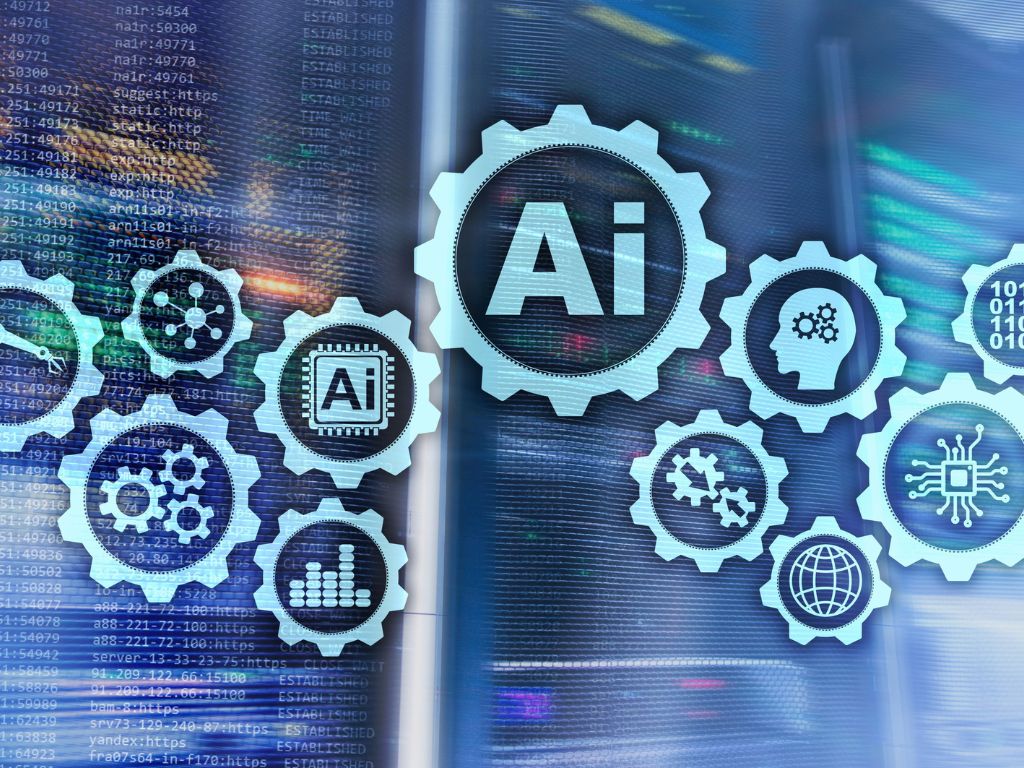
What Exactly is AI Lead Generation?
At its heart, AI lead generation is the strategic application of artificial intelligence technologies including machine learning (ML), natural language processing (NLP), and predictive analytics to automate, optimize, and fundamentally enhance every stage of the lead generation process. It’s far more than just automating repetitive tasks; it’s about infusing intelligence into what was once a largely manual and intuitive operation.
Imagine a system that continuously learns from every interaction, every data point, and every conversion (or non-conversion). That’s what AI brings. It starts by ingesting colossal amounts of data from diverse sources: your CRM, website analytics, social media channels, third-party data providers, and even public databases.
Machine learning algorithms then sift through this ocean of information, identifying subtle patterns, correlations, and buying signals that would be impossible for humans to detect at scale. This allows AI to construct incredibly precise ideal customer profiles and pinpoint individuals or companies that are not just a demographic fit, but an intent fit.
Once potential leads are identified, AI leverages predictive analytics to score and prioritize them based on their likelihood to convert, ensuring sales teams focus their efforts on the hottest prospects. Furthermore, NLP and even generative AI capabilities come into play to craft hyper-personalized outreach messages and sequences, dynamically adapting content based on a prospect’s specific behavior, interests, and stage in the buying journey. In essence, AI lead generation transforms the traditional funnel into an intelligent, self-optimizing engine that consistently delivers higher quality leads with greater efficiency and a dramatically improved conversion rate.
How AI Reimagines the Lead Generation Funnel
The traditional lead generation funnel, often depicted as a linear path from broad awareness to a hopeful conversion, has long been plagued by inefficiencies and leaky stages. AI doesn’t just patch these leaks; it fundamentally re-engineers the entire structure, transforming it into a dynamic, intelligent, and self-optimizing growth engine.
At the Top of the Funnel (ToFu) – Awareness & Attraction:
Traditionally, this stage involved casting a wide net through general marketing campaigns, SEO, and content creation, hoping to catch a few relevant prospects.
AI elevates this from guesswork to precise targeting. Instead of simply attracting traffic, AI actively identifies and predicts who will become a high-value lead. Through advanced data analysis of web behavior, social signals, firmographics, technographics, and even competitor analysis, AI constructs incredibly precise Ideal Customer Profiles (ICPs) and identifies lookalike audiences that exhibit strong buying signals.
This means your marketing efforts are no longer aimed at a broad audience, but laser-focused on individuals and companies most likely to be interested in your offerings, dramatically reducing wasted ad spend and boosting initial engagement. AI can even suggest optimal content topics and distribution channels to resonate with these identified high-intent segments.
In the Middle of the Funnel (MoFu) – Interest & Engagement:
Once a prospect enters your orbit, AI takes personalization and nurturing to an unprecedented level. Gone are the days of one-size-fits-all email sequences. AI leverages Natural Language Processing (NLP) and machine learning to dynamically tailor content, messaging, and even website experiences based on real-time prospect behavior, preferences, and their specific stage in the buying journey.
If a prospect spends time on a particular product page, AI can trigger a personalized email with relevant case studies or a chatbot interaction offering a demo. AI-powered chatbots provide instant, 24/7 engagement, answering questions, qualifying leads, and guiding them further down the funnel, ensuring no interested party is left waiting.
Furthermore, AI continuously refines lead scoring, moving beyond simple demographic matching to a sophisticated behavioral analysis that identifies genuine interest and intent, ensuring the right content reaches the right person at the right time.
At the Bottom of the Funnel (BoFu) – Consideration & Decision:
This is where AI ensures your sales teams are working smarter, not just harder. Predictive analytics, refined throughout the funnel, ensures that only the most qualified, highest-intent leads are passed to sales. This eliminates countless hours spent on unqualified prospects, allowing sales professionals to focus their precious time on opportunities with the highest propensity to convert.
AI can even arm sales reps with real-time insights during calls, suggesting talking points, identifying potential objections, and recommending the next best action based on the prospect’s profile and historical data. Automated follow-up sequences, dynamically triggered and personalized by AI, ensure that no lead falls through the cracks post-call or demo, maintaining momentum towards conversion.
In essence, AI transforms the traditional funnel from a static, leaky pipeline into a continuously learning, self-optimizing ecosystem that consistently delivers higher quality leads, accelerates the sales cycle, and maximizes conversion rates. It’s about intelligence infused at every touchpoint, ensuring every action contributes to sustainable growth.
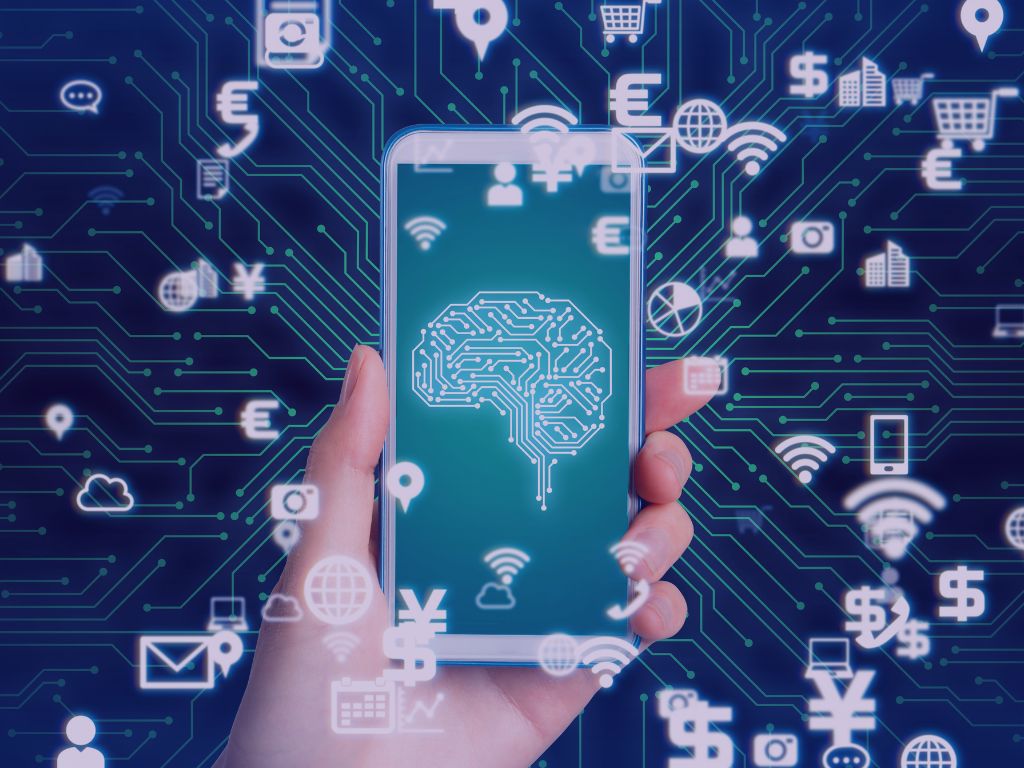
Core AI Capabilities for Smarter Lead Generation
The intelligence powering this transformation isn’t magic; it’s the strategic deployment of several sophisticated AI capabilities working in concert. These aren’t just buzzwords; they are the fundamental technologies that enable the precision, personalization, and efficiency defining modern lead generation.
Machine Learning (ML): The Brain Behind the Insights
At the heart of AI lead generation is Machine Learning. ML algorithms are designed to learn from data, identify complex patterns, and make predictions or decisions without being explicitly programmed for every scenario. In the context of lead generation, ML continuously analyzes vast datasets – including CRM history, website visits, social media interactions, email engagement, and third-party demographic/firmographic data.
- Pattern Recognition & ICP Development: ML identifies subtle correlations and characteristics shared by your most valuable customers, dynamically refining your Ideal Customer Profiles (ICPs) far beyond static demographics. It can detect which content resonates, which channels perform best, and what behaviors precede a conversion.
- Dynamic Lead Scoring: Beyond simple rule-based scoring, ML models learn from historical conversions and non-conversions to assign highly accurate lead scores, continually adjusting based on new data and real-time prospect behavior. This ensures sales teams always focus on the highest-propensity leads.
- Lookalike Audience Identification: By understanding the attributes of your best customers, ML can scour vast databases to find new prospects who share similar characteristics and behaviors, expanding your reach with unprecedented accuracy.
Natural Language Processing (NLP): Understanding and Speaking Your Customer’s Language
NLP is the AI capability that allows machines to understand, interpret, and generate human language. Its role in lead generation is pivotal for personalization and communication at scale.
- Intent Analysis: NLP can analyze text data from emails, chat conversations, social media posts, and website searches to understand a prospect’s underlying intent, pain points, and product interest. This allows for highly targeted follow-ups.
- Content Personalization: By understanding a prospect’s expressed needs, NLP can help tailor website content, email messages, and ad copy to resonate directly with their specific queries and interests.
- AI-Powered Chatbots & Virtual Assistants: NLP enables chatbots to engage in natural, human-like conversations, answer common questions, qualify leads, and even guide prospects through initial stages of the sales funnel, providing 24/7 support.
Predictive Analytics: Forecasting Future Success
Building on the insights from ML and NLP, predictive analytics uses statistical algorithms and machine learning techniques to forecast future outcomes based on historical data.
- Conversion Likelihood: Predictive models assess a lead’s likelihood to convert based on hundreds of data points, allowing sales and marketing teams to prioritize efforts and allocate resources to the most promising opportunities.
- Churn Prediction: For existing customers, predictive analytics can identify signals that indicate a risk of churn, enabling proactive outreach and retention strategies.
- Next Best Action Recommendations: For sales reps, predictive analytics can suggest the most effective next steps for a particular lead, whether it’s a specific piece of content, a personalized email, or a direct call.
Generative AI: Crafting Hyper-Personalized Communication
A newer but rapidly impactful capability, Generative AI (like large language models) can create new content, images, or other media. In lead generation, its power lies in personalization and scale.
- Dynamic Content Creation: Generative AI can draft personalized email subject lines, body copy, social media posts, and even ad creatives tailored to individual prospect profiles and their specific stage in the buying journey.
- Personalized Outreach Sequences: It can generate entire sequences of follow-up messages, adapting the tone, content, and call-to-action based on how a prospect interacts with previous communications.
- Overcoming Writer’s Block: Sales and marketing teams can leverage generative AI to quickly draft initial versions of outreach messages, proposals, or content pieces, significantly speeding up content creation workflows.
Together, these core AI capabilities form a sophisticated ecosystem that transforms lead generation from a reactive, labor-intensive process into a proactive, intelligent, and highly efficient growth engine, continually learning and optimizing to deliver superior results.

Predictive Analytics & Lead Scoring: Pinpointing High-Value Prospects
Gone are the days of static, rule-based lead scoring that often missed the mark. Traditional methods relied heavily on demographic data or basic firmographics, assigning scores based on predefined criteria that rarely captured the nuances of true buyer intent. The result? Sales teams spending precious time chasing leads with low propensity to convert, leading to frustration and inefficiency.
Predictive analytics, powered by the machine learning insights gleaned from vast datasets, fundamentally transforms this process. It moves beyond “who” a prospect is to “what they are likely to do next.” By analyzing hundreds, even thousands, of data points – including web behavior, email engagement, social media interactions, content consumption, past purchase history, and even external market signals – predictive models identify subtle patterns and correlations that indicate a high likelihood of conversion.
This sophisticated analysis allows for dynamic lead scoring, where a lead’s score isn’t fixed but continuously adjusts based on their real-time actions and evolving intent. If a prospect downloads a whitepaper, visits a pricing page multiple times, and then engages with a chatbot, their score will rapidly increase, signaling a heightened level of interest. Conversely, a lack of engagement or certain negative signals could lower a score, ensuring sales efforts aren’t wasted.
The benefits are profound:
- Unparalleled Accuracy: Predictive analytics forecasts conversion likelihood with remarkable precision, moving from educated guesses to data-backed foresight.
- Optimal Resource Allocation: Sales teams receive a prioritized list of the hottest leads, allowing them to focus their energy and expertise where it will yield the greatest return. This eliminates countless hours spent on unqualified prospects.
- Accelerated Sales Cycles: By identifying high-intent leads earlier and ensuring timely, relevant follow-ups, the time from initial contact to closed-won deals is significantly reduced.
- Proactive Intervention: Predictive models can also flag leads at risk of churn or identify opportunities for upselling/cross-selling within existing customer bases, empowering proactive engagement.
In essence, predictive analytics and AI-powered lead scoring act as an intelligent compass, guiding your sales and marketing teams directly to the most promising opportunities. It’s about working smarter, not harder, ensuring every outreach effort is targeted, timely, and impactful, ultimately driving superior growth and ROI.
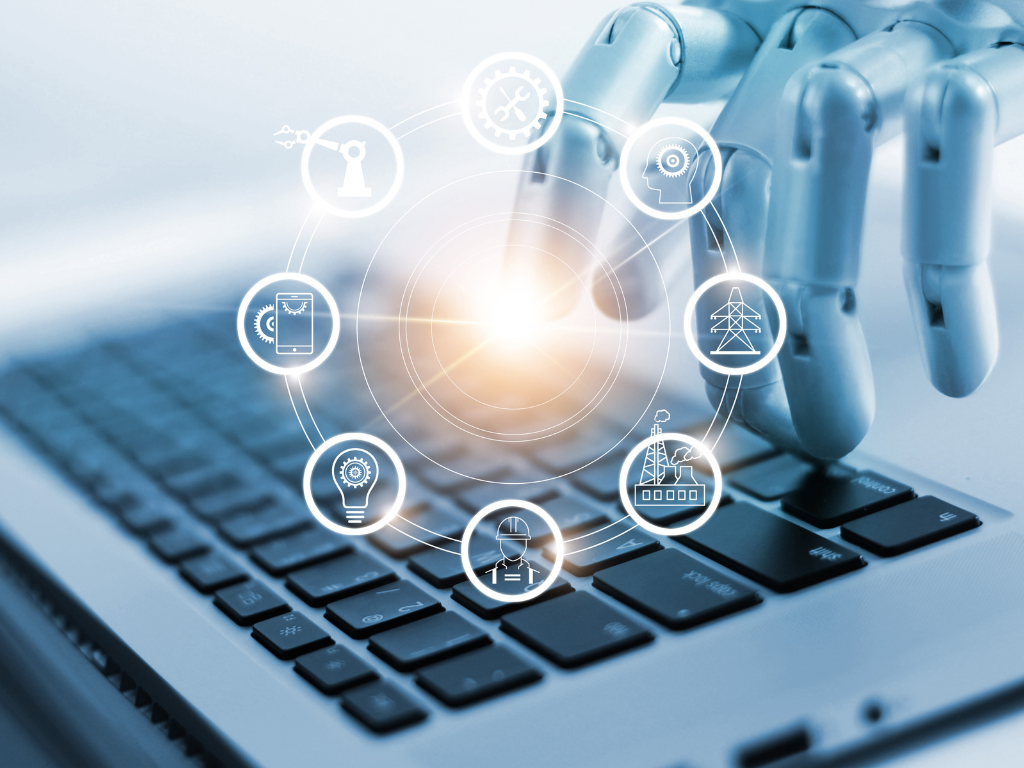
Hyper-Personalization: Engaging Leads with Precision
In an age of information overload, generic outreach is not just ineffective; it’s detrimental. Prospects are bombarded with messages daily, and anything that doesn’t immediately resonate is swiftly ignored. This is where hyper-personalization, powered by AI, steps in, transforming broad strokes into laser-focused engagements that feel uniquely crafted for each individual.
Unlike traditional personalization, which might simply insert a name into an email, hyper-personalization goes far deeper. It’s about understanding a prospect’s specific needs, pain points, preferences, and even their emotional state, then dynamically tailoring every interaction to match. AI makes this unprecedented level of precision possible by leveraging its ability to process and act upon vast amounts of granular data.
How AI Fuels Hyper-Personalization:
- Deep Behavioral Analysis (ML): Machine Learning algorithms continuously analyze a prospect’s digital footprint – their website clicks, content downloads, email opens, social media interactions, and even their search queries. This creates a rich, real-time profile of their interests, intent, and stage in the buying journey. ML identifies subtle patterns that indicate specific needs or preferences, allowing for truly relevant content delivery.
- Intent & Sentiment Understanding (NLP): Natural Language Processing enables AI to “read” and comprehend human language from various sources like chat transcripts, email replies, and social media comments. This allows AI to discern a prospect’s underlying intent, specific questions, and even their sentiment, enabling responses and content that directly address their concerns.
- Dynamic Content Generation (Generative AI): Building on the insights from ML and NLP, Generative AI can craft entirely new content pieces on the fly. This means personalized email subject lines, body copy, ad creatives, and even website headlines can be dynamically generated to align perfectly with a prospect’s profile, expressed needs, and interaction history. Imagine an email that not only references a specific product page a prospect visited but also discusses a pain point they mentioned in a recent chat, and then offers a case study from their specific industry – all generated and delivered automatically.
The Impact on Engagement:
The result of this AI-driven precision is a dramatically enhanced prospect experience. Messages are no longer generic; they are:
- Contextually Relevant: Every piece of communication, from an email to a chatbot interaction, is perfectly aligned with where the prospect is in their journey and what they’ve shown interest in.
- Timely: AI ensures that personalized content is delivered at the optimal moment, whether it’s immediately after a specific website action or at a predicted peak engagement time.
- High-Value: By addressing specific needs and offering solutions to identified pain points, personalized content becomes genuinely helpful, building trust and rapport.
This level of hyper-personalization leads to significantly higher open rates, click-through rates, and conversion rates. It transforms the sales and marketing process from a push model to a pull model, where prospects feel understood and valued, making them far more receptive to your offerings. In essence, AI empowers you to engage leads not just with scale, but with a level of precision that makes every interaction feel like a one-on-one conversation, fostering stronger relationships and accelerating growth.
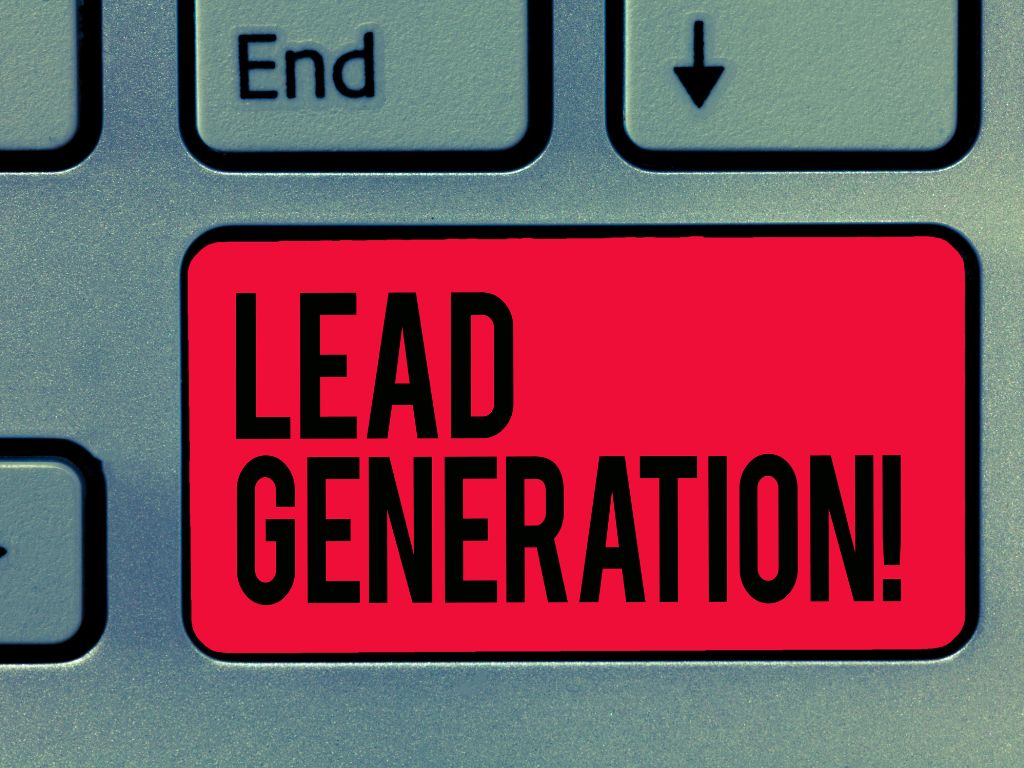
Content Optimization & Generation: Fueling the Customer Journey
In the dynamic landscape of modern sales and marketing, content is the lifeblood that fuels engagement and guides prospects through their journey. However, consistently creating high-quality, relevant content that resonates with diverse audiences at every stage of the funnel is a monumental and often resource-intensive challenge. This is where AI steps in, transforming content from a static asset into a dynamic, intelligent engine for growth.
AI’s capabilities extend beyond mere automation; they revolutionize how content is conceived, created, optimized, and delivered, ensuring every piece serves a strategic purpose.
Intelligent Content Optimization
Before generating new content, AI first optimizes what you already have. Machine Learning algorithms analyze vast datasets, including website analytics, content consumption patterns, conversion rates, and SEO performance, to identify what resonates most effectively with your target audience.
- Performance Analysis: AI pinpoints which content pieces drive the most engagement, conversions, or time on page for specific segments, providing data-backed insights into what works.
- Content Gaps & Opportunities: By understanding user intent (via NLP) and analyzing competitor content, AI can identify topics and formats that your audience is searching for but you haven’t yet addressed, revealing lucrative content opportunities.
- SEO & Readability Enhancements: AI can suggest real-time modifications to existing content for improved search engine ranking, enhanced readability, and greater user engagement, ensuring your valuable assets are always performing at their peak.
- Journey Mapping: AI helps map existing content to specific stages of the buyer’s journey, ensuring that prospects receive the most appropriate information precisely when they need it, whether they’re in the initial awareness phase or deep into consideration.
Scalable Content Generation
The advent of Generative AI has transformed content creation from a bottleneck into a scalable, personalized powerhouse. Leveraging large language models, AI can produce a remarkable array of content types at unprecedented speed and volume.
- Hyper-Personalized Outreach: Building on insights from ML and NLP, Generative AI crafts unique email subject lines, body copy, ad creatives, and social media posts that are dynamically tailored to individual prospect profiles, their expressed needs, and their real-time behavior. Imagine an email that not only references a specific product page a prospect visited but also discusses a pain point they mentioned in a recent chat, and then offers a case study from their specific industry – all generated automatically.
- Rapid Draft Generation: For longer-form content like blog posts, whitepapers, or reports, AI can generate initial outlines, specific sections, or even full first drafts, significantly reducing the time and effort required for content production. This frees up human writers to focus on strategic refinement, brand voice, and adding unique insights.
- Variant Creation for A/B Testing: AI can quickly generate multiple variations of headlines, calls-to-action, or ad copy for A/B testing, allowing marketing teams to rapidly identify the most effective messaging.
- Automated Q&A and FAQs: AI can process your existing knowledge base and customer interactions to automatically generate comprehensive FAQ sections or provide instant answers through chatbots, ensuring consistent and accurate information delivery.
Fueling the Entire Customer Journey
This AI-driven content transformation ensures every touchpoint is optimized for impact:
- At the Top of the Funnel (Awareness): AI helps identify trending topics, keywords with high search volume, and content formats that attract new audiences. It can even assist in drafting initial blog posts, social media campaigns, or landing page copy designed for broad appeal and initial engagement.
- In the Middle of the Funnel (Interest & Engagement): AI dynamically recommends or generates mid-funnel content such as specific case studies, educational whitepapers, webinar invites, or product comparisons based on a prospect’s observed behavior and expressed interests. This ensures nurturing sequences are highly relevant and compelling.
- At the Bottom of the Funnel (Consideration & Decision): AI assists in crafting compelling sales collateral, personalized proposals, and targeted follow-up communications that address specific objections, highlight unique value propositions, or offer tailored solutions, accelerating the path to conversion.
In essence, AI transforms content from a static asset into a dynamic, intelligent system that continuously learns, adapts, and delivers precisely what prospects need, when they need it. This not only dramatically increases efficiency but also fosters deeper engagement, accelerates progression through the sales funnel, and ultimately, drives sustainable growth.
Boosting Marketing ROI and Operational Efficiency
The transformative power of AI in lead generation isn’t just about technological advancement; it directly translates into tangible business benefits, most notably in boosting marketing ROI and dramatically improving operational efficiency. For businesses grappling with tight budgets and the constant pressure to do more with less, AI offers a compelling solution.
Supercharging Marketing ROI
The traditional approach to lead generation often involved a significant amount of guesswork and a “spray and pray” methodology, leading to considerable wasted marketing spend. AI fundamentally changes this by infusing precision and intelligence into every campaign:
- Eliminating Wasted Ad Spend: AI’s unparalleled ability to identify high-intent prospects and create hyper-targeted Ideal Customer Profiles (ICPs) means your marketing messages and ad campaigns are delivered exclusively to the individuals and companies most likely to convert. This laser focus dramatically reduces impressions and clicks that would otherwise go to uninterested parties, ensuring every dollar spent works harder.
- Higher Conversion Rates: By delivering hyper-personalized content and offers at the optimal moment in a prospect’s journey, AI significantly increases engagement and conversion rates across the funnel. More qualified leads entering the sales pipeline means a higher percentage of those leads converting into paying customers, directly impacting revenue.
- Optimized Resource Allocation: AI-powered attribution models provide granular insights into which channels, campaigns, and content pieces are truly driving conversions and revenue. This data-backed understanding allows marketing teams to reallocate budgets to the highest-performing areas, continuously optimizing their spend for maximum return.
- Accelerated Sales Cycles: By identifying and prioritizing the “hottest” leads with the highest propensity to convert, AI ensures sales teams are focusing their efforts on opportunities that close faster. A quicker sales cycle means revenue is realized sooner, improving cash flow and overall business agility.
Unlocking Operational Efficiency
Beyond financial returns, AI liberates sales and marketing teams from the shackles of manual, repetitive tasks, fostering a new era of operational efficiency:
- Automation of Tedious Tasks: AI takes over time-consuming, administrative duties such as data enrichment, list building, initial lead qualification, scheduling follow-ups, and even basic email drafting. This frees up invaluable human hours that were previously spent on mundane chores.
- Empowering Human Teams for High-Value Work: With AI handling the automation, sales professionals can dedicate more time to building genuine relationships, understanding complex client needs, and closing deals. Marketing teams can shift their focus from manual execution to strategic planning, creative ideation, and deep analysis, leveraging their unique human creativity and empathy.
- Scalability Without Linear Cost Increase: AI allows businesses to process a significantly larger volume of leads, manage more complex data sets, and execute more personalized campaigns without needing to proportionally increase headcount. This enables scalable growth that was previously unimaginable.
- Real-time Insights & Faster Decision-Making: AI processes vast amounts of data at lightning speed, providing real-time insights into lead behavior, campaign performance, and market trends. This empowers sales and marketing leaders to make informed, agile decisions, adapting strategies quickly to capitalize on opportunities or address challenges.
- Improved Sales-Marketing Alignment: By automating lead scoring, qualification, and handoffs, AI ensures a seamless, data-driven transition of leads from marketing to sales. Both teams operate from a unified, intelligent platform, reducing friction and improving collaborative effectiveness.
In essence, AI lead generation isn’t just about doing things differently; it’s about doing the right things, more efficiently, and with greater impact. It transforms sales and marketing operations from cost centers into high-performing growth engines, delivering superior ROI and unlocking unprecedented levels of productivity.
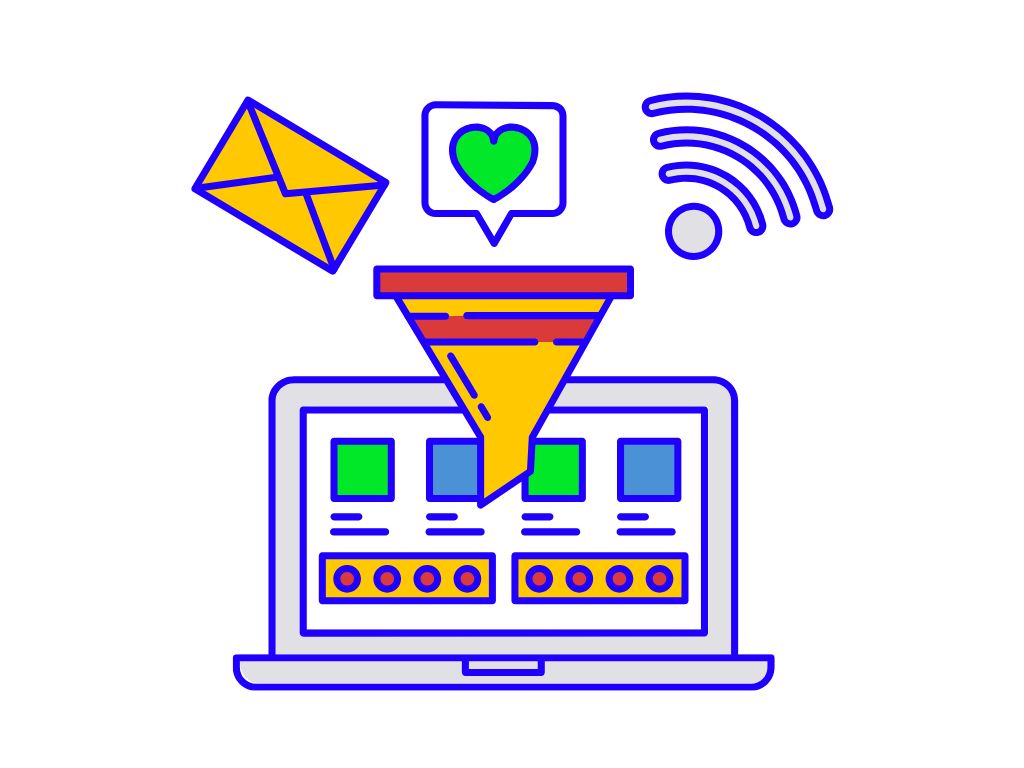
Enhancing Customer Experience and Retention
The journey with a customer doesn’t end when a lead converts; in fact, that’s often just the beginning of a long-term relationship. The rich, intelligent data profiles built during the AI-powered lead generation process become an invaluable asset for enhancing the entire post-sales customer experience and driving long-term retention. AI ensures that the personalized attention prospects received extends seamlessly into their life as a valued customer.
Seamless Onboarding & Tailored Journeys
The deep insights gathered by AI about a customer’s specific needs, pain points, and preferences during the sales cycle are not discarded post-conversion. Instead, they are leveraged to create hyper-personalized onboarding experiences. AI can recommend specific tutorials, relevant documentation, or product features to highlight based on the customer’s industry, expressed goals, or even their prior engagement with your content. This ensures new customers quickly find value, reducing early churn and fostering a strong foundational relationship.
Proactive Support and Churn Prevention
AI’s predictive power extends far beyond identifying sales leads; it’s a critical tool for customer success. By continuously analyzing customer behavior – including product usage patterns, engagement levels, support ticket history, and survey responses – AI can:
- Predict Churn Risk: Machine Learning models can identify subtle signals that indicate a customer might be disengaging or at risk of churning. This allows customer success teams to proactively reach out with targeted support, relevant resources, or personalized interventions before a problem escalates, significantly improving retention rates.
- Anticipate Needs: AI can spot patterns suggesting a customer might need assistance with a specific feature, is ready for an upgrade, or could benefit from a particular integration. This enables proactive outreach with helpful content or direct support, transforming reactive problem-solving into proactive value delivery.
Personalized Upsell, Cross-sell, and Loyalty
Just as AI identifies high-intent prospects, it excels at identifying opportunities within your existing customer base. By analyzing purchase history, product usage, and expressed interests (via NLP in support interactions or feedback), AI can:
- Recommend Relevant Offerings: Suggest complementary products, services, or upgrades that genuinely add value to the customer’s existing solution, increasing Customer Lifetime Value (CLTV).
- Tailor Loyalty Programs: Personalize offers, discounts, or exclusive content for long-term customers, making them feel valued and encouraging continued engagement.
Enhanced Customer Service & Feedback Loops
AI-powered capabilities dramatically improve the efficiency and quality of customer service:
- 24/7 Instant Support: NLP-driven chatbots and virtual assistants provide immediate answers to common queries, resolve basic issues, and guide customers, reducing wait times and freeing human agents for more complex problems.
- Intelligent Routing: AI can analyze the nature of a customer’s query and their history to route them to the most appropriate human agent, ensuring faster resolution and a more satisfying experience.
- Actionable Insights from Feedback: AI can analyze vast amounts of unstructured customer feedback from surveys, reviews, and support conversations (using NLP) to identify recurring themes, pain points, and emerging trends. This provides invaluable insights for product development, service improvement, and overall business strategy, fostering a continuous loop of learning and enhancement that directly benefits the customer.
In essence, the intelligence gained from AI lead generation creates a holistic, customer-centric ecosystem. It ensures that every interaction, from the very first touchpoint to ongoing support and retention efforts, is personalized, proactive, and poised to build lasting, valuable relationships.

Building Your AI Lead Generation Strategy: A Step-by-Step Guide
Implementing an AI-powered lead generation strategy isn’t a one-time installation; it’s a strategic evolution that requires careful planning, execution, and continuous refinement. While the technology is powerful, its true potential is unlocked when integrated thoughtfully into your existing sales and marketing ecosystem. Here’s a step-by-step guide to building your own intelligent growth engine:
Step 1: Define Your Clear Objectives & Key Performance Indicators (KPIs)
Before diving into tools and data, articulate precisely what you aim to achieve with AI. Are you looking to:
- Increase the volume of qualified leads by X%?
- Improve your Marketing Qualified Lead (MQL) to Sales Qualified Lead (SQL) conversion rate by Y%?
- Reduce your average sales cycle by Z days?
- Lower your Customer Acquisition Cost (CAC)?
- Enhance personalization across the buyer’s journey?
Setting specific, measurable, achievable, relevant, and time-bound (SMART) goals will provide a roadmap for your strategy, guide your technology choices, and allow you to accurately measure success.
Step 2: Audit Your Data Foundation & Infrastructure
AI’s intelligence is directly proportional to the quality and quantity of the data it learns from. This is arguably the most critical step.
- Data Quality Assessment: Evaluate the cleanliness, accuracy, and completeness of your existing data across all sources (CRM, marketing automation platforms, website analytics, social media, email campaigns, customer support logs, etc.). Identify and rectify any inconsistencies or gaps.
- Data Integration Strategy: Determine how all these disparate data sources will be integrated to provide a holistic view of your prospects and customers. A unified data platform or a robust integration layer is essential for AI to draw comprehensive insights.
- Current Tech Stack Review: Map out your existing sales and marketing technologies. Which tools are you using for CRM, email marketing, content management, analytics, and advertising? Understanding your current setup will inform how new AI tools can seamlessly integrate or if replacements are needed.
Step 3: Select the Right AI Tools & Platforms
The market is rich with AI-powered solutions, so choosing the right fit depends on your objectives and current infrastructure.
- Identify Core Needs: Based on your defined objectives, prioritize the AI capabilities you need most (e.g., advanced lead scoring, hyper-personalization, intelligent chatbots, content generation, predictive analytics for churn).
- Integration Capabilities: Look for platforms that offer robust integrations with your existing CRM and marketing automation systems. Seamless data flow is crucial.
- Scalability & Support: Choose solutions that can scale with your growth and vendors that offer strong customer support and ongoing development.
- Start Phased: You don’t need to implement every AI capability at once. Consider starting with a module that addresses your most pressing pain point (e.g., predictive lead scoring) and expand from there.
Step 4: Pilot, Learn, and Iterate
Rather than a full-scale rollout, begin with a pilot program to test the waters and gather valuable insights.
- Choose a Specific Use Case: Select a manageable segment of your audience, a particular product line, or a specific stage of the sales funnel for your initial AI deployment.
- Define Pilot Metrics: Clearly outline the success metrics for your pilot. Did the AI-scored leads convert faster? Did personalized emails show higher engagement?
- Analyze & Adapt: Closely monitor the results of your pilot. What worked well? What didn’t? Use these learnings to refine your strategy, adjust algorithms, and optimize processes before scaling up. This iterative approach minimizes risk and maximizes learning.
Step 5: Train Your Teams & Foster Collaboration
AI is a powerful tool, but it’s an enhancement to human capabilities, not a replacement. Successful adoption hinges on team buy-in and proper training.
- Educate & Empower: Train your sales and marketing teams on how AI works, what insights it provides, and how to effectively leverage the new tools. Help them understand that AI handles the tedious tasks, freeing them for more strategic, human-centric work.
- Shift Mindsets: Encourage a shift from manual, volume-based activities to data-driven, precision-targeted efforts. Emphasize the value of AI in making their jobs more efficient and impactful.
- Foster Alignment: AI naturally improves alignment between sales and marketing by providing a unified, data-backed view of leads. Establish clear hand-off processes and shared goals to maximize this synergy.
Step 6: Continuously Monitor, Measure, and Optimize
AI models are designed to learn and improve over time, but they require continuous feedback and oversight.
- Regular KPI Review: Consistently track your defined KPIs against your initial objectives. Are you meeting your targets? Where are there opportunities for improvement?
- Performance Analysis: Dig into the data. Are the AI-generated lead scores accurate? Is the personalization driving higher engagement? Are your sales cycles truly shortening?
- A/B Testing: Continuously A/B test different AI-driven approaches (e.g., variations in personalized messaging, different lead scoring parameters) to identify what yields the best results.
- Feedback Loop: Establish a feedback loop where sales teams can provide insights on lead quality back to marketing and the AI system. This real-world data helps the AI models learn and refine their predictions.
- Stay Updated: The AI landscape evolves rapidly. Stay informed about new capabilities and consider how they might further enhance your strategy.
By following these steps, you can transition from traditional, often inefficient, lead generation methods to a sophisticated, AI-powered growth engine that continuously learns, optimizes, and delivers superior results for your business. It’s an investment that pays compounding dividends in efficiency, accuracy, and ultimately, sustainable growth.
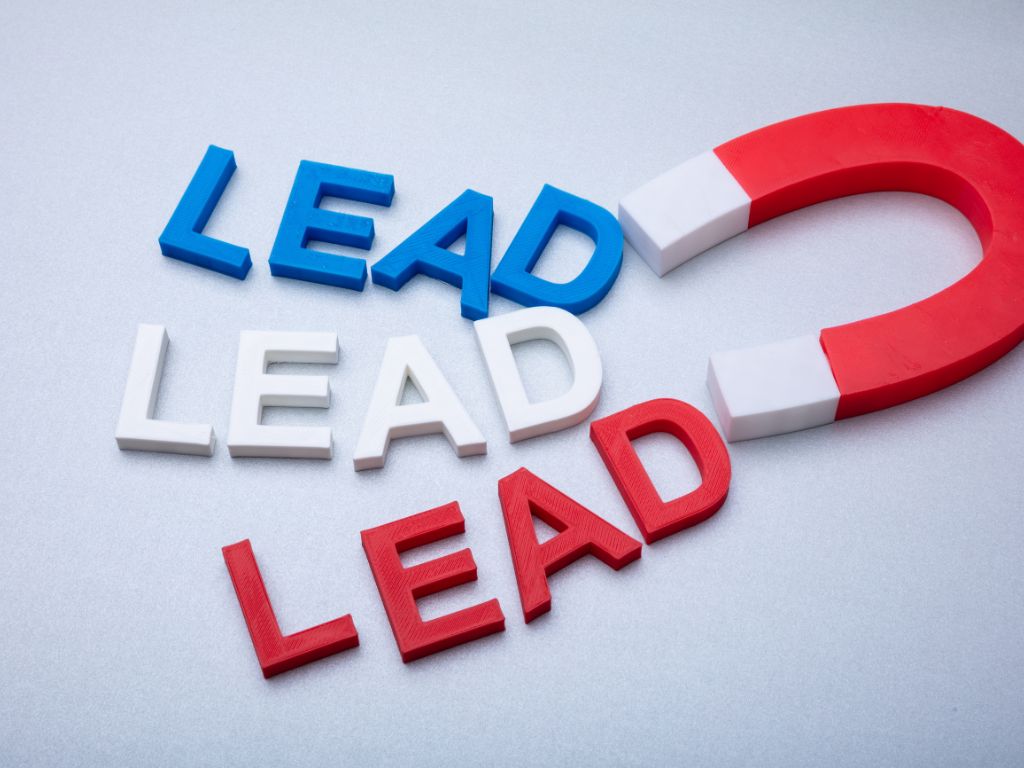
Choosing the Right AI Tools and Platforms
Navigating the burgeoning landscape of AI tools and platforms can feel overwhelming, but the key to success isn’t about acquiring every shiny new gadget; it’s about making strategic choices that align precisely with your defined objectives and existing infrastructure. Think of it not as a shopping spree, but as building a bespoke engine for your unique growth needs.
1. Pinpoint Your Core Needs, Not Just Features
Before you even glance at a vendor’s website, revisit the specific challenges you’re trying to solve and the KPIs you established. Are you struggling most with unqualified leads? Then advanced predictive lead scoring and ICP development tools should be your priority. Is personalization falling flat? Focus on platforms with robust NLP and generative AI capabilities for dynamic content. Are your sales reps drowning in administrative tasks? Look for automation features. Prioritizing your greatest pain points will narrow down the options significantly and ensure your investment directly addresses your most pressing needs.
2. Assess Your Current Ecosystem: Integration is Non-Negotiable
AI tools don’t operate in a vacuum. They thrive on data, and that data often resides in your existing CRM, marketing automation platforms, website analytics, and other business systems. Seamless integration is paramount.
- Native Integrations: Look for platforms that offer direct, out-of-the-box integrations with your core systems (e.g., Salesforce, HubSpot, Marketo). This minimizes setup time and potential data silos.
- Robust APIs: If native integrations aren’t available for every tool, ensure the platform provides a comprehensive and well-documented API (Application Programming Interface) that allows for custom connections and data exchange.
- Unified Data View: The ultimate goal is a holistic view of your prospects and customers. Your chosen tools should contribute to, or leverage, a unified data foundation to prevent fragmented insights.
3. Key AI Capabilities to Prioritize
While specific features vary, ensure your chosen platforms excel in the AI capabilities most relevant to lead generation:
- Advanced Lead Scoring & Predictive Analytics: This is foundational. The tool should leverage machine learning to go beyond simple rules, dynamically scoring leads based on granular behavioral and demographic data, predicting conversion likelihood, and identifying churn risk.
- Hyper-Personalization & Dynamic Content: Look for NLP capabilities to understand intent and generative AI to craft tailored messages (emails, ads, chat responses) at scale, ensuring every interaction feels uniquely relevant.
- Intelligent Automation: The platform should automate repetitive tasks like data enrichment, list segmentation, initial lead qualification, and follow-up scheduling, freeing human teams for high-value activities.
- Reporting & Analytics: Powerful dashboards and reporting features are crucial to track performance, measure ROI, and gain actionable insights for continuous optimization.
4. Due Diligence: Beyond the Demo
Once you’ve shortlisted potential tools, dive deeper into vendor evaluation:
- Scalability: Can the platform grow with your business? Will it handle increased data volume and user load as your needs evolve?
- Security & Compliance: Data privacy (GDPR, CCPA, etc.) is non-negotiable. Scrutinize the vendor’s data security protocols, encryption methods, and compliance certifications.
- Support & Training: What kind of customer support is offered? Is there comprehensive documentation, user communities, or dedicated account managers? Adequate training is vital for successful adoption by your teams.
- Reputation & Case Studies: Look for proven track records. Read reviews, request case studies from businesses similar to yours, and consider speaking to existing customers.
- Pricing Model: Understand the pricing structure – is it per user, per lead, based on data volume? Ensure it aligns with your budget and anticipated usage.
5. Embrace a Phased Implementation
You don’t need to revolutionize your entire lead generation process overnight. A phased approach minimizes risk and allows for continuous learning and optimization. Consider starting with one critical area, such as predictive lead scoring, or a specific segment of your audience. Gather data, analyze performance, refine your strategy, and then gradually expand your AI deployment across more areas of your sales and marketing funnel.
Choosing the right AI tools is a strategic investment. By focusing on your core needs, ensuring seamless integration, prioritizing essential AI capabilities, and conducting thorough vendor due diligence, you can build a robust, intelligent lead generation engine that truly fuels sustainable growth.

Integrating AI with Your Existing Sales & Marketing Stack
Implementing AI isn’t about ripping out your existing sales and marketing infrastructure and starting from scratch. On the contrary, the true power of AI lead generation lies in its ability to seamlessly integrate with and amplify the tools you already use. Think of AI as the intelligent layer that supercharges your CRM, marketing automation platform, analytics dashboards, and communication channels.
The challenge, and opportunity, often lies in the historical fragmentation of data. Your customer relationship management (CRM) system holds sales interactions, your marketing automation platform tracks campaign engagement, your website analytics reveal browsing behavior, and your customer support logs contain invaluable insights into pain points. For AI to deliver its full potential – identifying high-intent prospects, hyper-personalizing outreach, and optimizing lead scoring – it needs access to this rich, diverse data. Without robust integration, AI operates in a silo, offering limited value.
Bridging the Data Divide: Key Integration Strategies
Achieving this seamless data flow is crucial. Here are the primary approaches to ensure your AI tools are constantly fed with the insights they need:
- Native Integrations: Many leading AI lead generation platforms offer direct, out-of-the-box connectors to popular CRMs (like Salesforce, HubSpot, Zoho), marketing automation systems (Marketo, Pardot, ActiveCampaign), and advertising platforms (Google Ads, Meta Ads). These pre-built integrations simplify setup and ensure consistent data synchronization.
- Application Programming Interfaces (APIs): For more customized setups or connecting less common tools, robust APIs are the backbone of modern integration. APIs allow different software applications to communicate and exchange data programmatically. This enables developers to build bespoke connections, ensuring all relevant data points flow into and out of your AI platform.
- Integration Platform as a Service (iPaaS): Tools like Zapier, Workato, or Tray.io act as middleware, allowing you to create complex automated workflows between hundreds of different applications without extensive coding. iPaaS solutions are excellent for orchestrating data flows across multiple systems, ensuring that a lead’s activity in one platform instantly updates their profile in another, ready for AI analysis.
- Centralized Data Warehouses/Lakes: For organizations with vast amounts of data from numerous sources, consolidating information into a data warehouse or data lake provides a single source of truth. AI models can then access this unified repository, pulling comprehensive insights from across your entire business ecosystem.
The Synergy of Integration: Benefits for Your Teams
When AI is truly integrated, the benefits ripple across your entire sales and marketing operation:
- Holistic Customer View: AI gains a 360-degree understanding of each prospect and customer, combining demographic data from your CRM with behavioral data from your website and engagement data from your marketing automation platform. This enables more accurate predictions and deeper personalization.
- Real-time Intelligence: As soon as a prospect interacts with your content, visits a key page, or responds to an email, that data is fed to the AI. This real-time intelligence allows for dynamic lead scoring adjustments and immediate, personalized follow-ups, ensuring your teams are always acting on the freshest insights.
- Streamlined Workflows: Manual data entry, list building, and lead qualification become relics of the past. AI automates these processes, reducing human error and freeing up valuable time for strategic activities. Sales reps receive pre-qualified, highly scored leads directly in their CRM, complete with AI-generated insights to guide their outreach.
- Enhanced Sales-Marketing Alignment: Integration ensures a single source of truth for lead data, fostering unprecedented alignment between sales and marketing. Both teams operate with the same intelligent lead scores and comprehensive prospect profiles, eliminating friction and enabling a seamless hand-off from MQL to SQL.
- Maximized ROI from Existing Investments: Instead of making your current tools obsolete, AI integration enhances their value. Your CRM becomes smarter, your marketing automation more precise, and your analytics more predictive, leveraging your existing technology investments to their fullest potential.
In essence, successful AI integration transforms your sales and marketing stack from a collection of disparate tools into a cohesive, intelligent growth engine. It ensures that every piece of data contributes to a unified understanding of your customer, empowering your teams to work smarter, not just harder, and drive sustainable, data-backed growth.
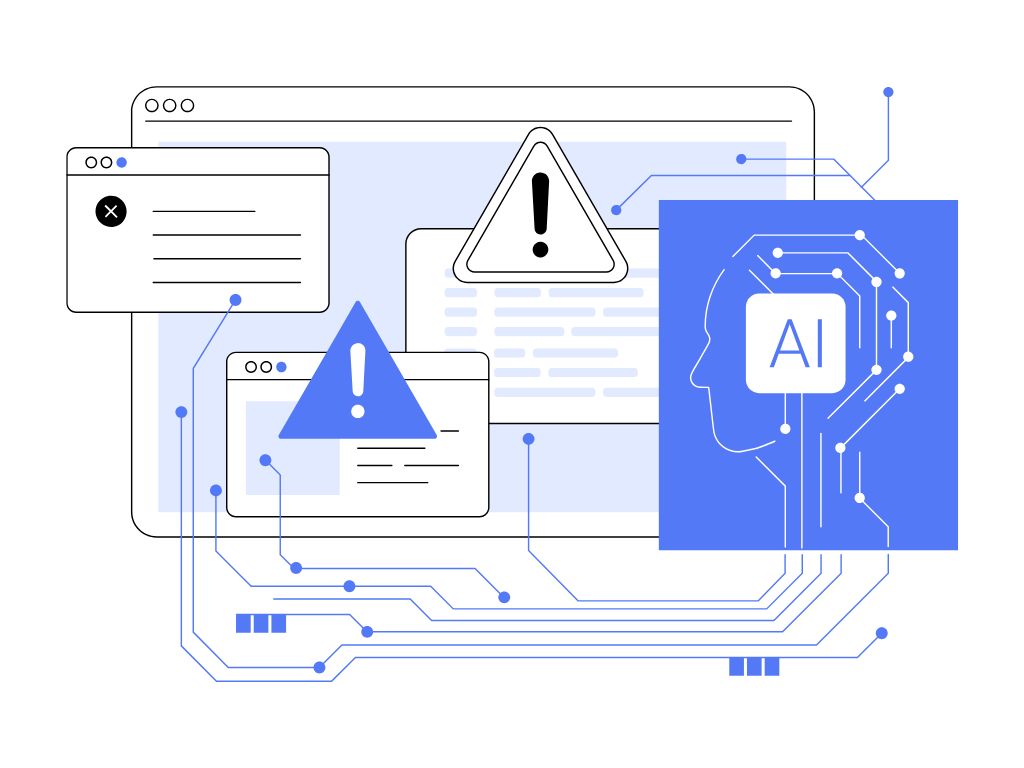
Overcoming Challenges and Ensuring Ethical AI Use
While the promise of AI lead generation is immense, like any transformative technology, its successful implementation isn’t without its nuances and challenges. Navigating these hurdles effectively is crucial for unlocking AI’s full potential and ensuring a sustainable, ethical growth strategy.
Navigating Implementation Challenges
The journey to an AI-powered growth engine often encounters a few common roadblocks. Being aware of them and having a proactive strategy is key:
- Data Quality and Silos: AI thrives on data, but it’s only as intelligent as the data it’s fed. Inaccurate, incomplete, or fragmented data across disparate systems (CRM, marketing automation, analytics) can severely hamper AI’s effectiveness.
- Overcoming: Prioritize a comprehensive data audit and cleansing process. Invest in robust data integration strategies (APIs, iPaaS, centralized data warehouses) to create a unified, clean source of truth for your AI models.
- Talent and Skillset Gaps: Your teams might lack the necessary skills to effectively manage, interpret, and leverage AI tools. There can also be apprehension or resistance to new technologies, fueled by fears of job displacement.
- Overcoming: Invest in upskilling and training programs for your sales and marketing teams. Emphasize that AI is an augmentation tool, designed to free them from mundane tasks and empower them to focus on high-value, human-centric activities like relationship building and strategic thinking. Foster a culture of continuous learning and experimentation.
- Integration Complexity: While the previous section highlighted the importance of integration, actually achieving seamless data flow between new AI tools and your existing, often complex, tech stack can be technically challenging and time-consuming.
- Overcoming: Adopt a phased implementation approach. Start with pilot programs focused on a specific use case. Choose AI platforms known for their robust native integrations or comprehensive APIs. Consider using Integration Platform as a Service (iPaaS) solutions to streamline complex workflows.
- Measuring Tangible ROI: It can sometimes be challenging to directly attribute specific revenue gains solely to AI, especially in the initial stages.
- Overcoming: Establish clear, measurable KPIs from the outset (e.g., increased MQL-to-SQL conversion rate, reduced CAC, shortened sales cycle). Leverage the AI platform’s built-in analytics and conduct rigorous A/B testing to demonstrate the incremental value AI brings.
The Imperative of Ethical AI Use
Beyond technical implementation, the responsible and ethical deployment of AI is paramount. As AI becomes more sophisticated, its potential impact on individuals and society grows, making ethical considerations non-negotiable. Building and maintaining customer trust should always be at the forefront.
- Data Privacy and Security: AI systems rely on vast amounts of personal and behavioral data. Ensuring this data is collected, stored, and used in compliance with regulations like GDPR, CCPA, and other privacy laws is critical.
- Ensuring Ethical Use: Implement robust data anonymization techniques where possible. Secure data storage and transmission are essential. Be transparent with users about what data is collected and how it’s used, providing clear opt-out mechanisms.
- Algorithmic Bias: AI models learn from the data they’re trained on. If this data contains historical biases (e.g., favoring certain demographics in past sales), the AI can perpetuate and even amplify these biases, leading to unfair or discriminatory outcomes in lead scoring or targeting.
- Ensuring Ethical Use: Actively work to diversify and cleanse training datasets to mitigate bias. Regularly audit AI algorithms for fairness and unintended consequences. Implement human oversight and review processes to catch and correct biased outputs.
- Transparency and Explainability (XAI): Sometimes, AI models can feel like “black boxes,” making decisions without clear, human-understandable reasoning. This lack of transparency can erode trust.
- Ensuring Ethical Use: Strive for explainable AI (XAI) where possible, allowing you to understand why a lead was scored highly or why a certain message was generated. Be transparent with your customers about the role AI plays in your interactions, without over-promising or misrepresenting its capabilities.
- Customer Trust and Experience: Over-personalization or using data in ways that feel intrusive can backfire, leading to discomfort and a loss of trust.
- Ensuring Ethical Use: Focus on value-driven personalization that genuinely helps the prospect, rather than just demonstrating data prowess. Always prioritize the customer’s benefit. Balance automation with human touchpoints where empathy and nuanced understanding are crucial.
By proactively addressing these implementation challenges and embedding ethical considerations into the core of your AI strategy, businesses can not only maximize their return on investment but also build stronger, more trusting relationships with their customers, fostering sustainable and responsible growth.

The Future Landscape of AI in Sales & Marketing
The current advancements in AI for lead generation are just the tip of the iceberg. As artificial intelligence continues its rapid evolution, the sales and marketing landscape will be fundamentally reshaped, moving towards an even more intelligent, autonomous, and seamlessly integrated future. This isn’t just about incremental improvements; it’s about a paradigm shift where AI becomes the central nervous system of growth.
Hyper-Intelligent Personalization & Predictive Engagement
We’re moving beyond current hyper-personalization to truly prescriptive engagement. Future AI will not only understand a prospect’s intent but also their emotional state, learning from subtle cues in language, tone, and digital behavior. This will enable:
- Emotional Intelligence in Outreach: AI will dynamically adjust messaging tone, urgency, and content based on a prospect’s real-time emotional signals, ensuring communications are always empathetic and resonate deeply.
- Anticipatory Marketing: AI will predict needs before they even arise, proactively presenting solutions or content based on complex patterns of behavior and external market shifts. Imagine AI recommending a product upgrade not because a customer clicked a page, but because their industry is undergoing a specific technological shift that your AI has identified as a future pain point for them.
- Cross-Channel Journey Orchestration: AI will seamlessly orchestrate a prospect’s journey across all touchpoints – email, social media, website, chatbots, and even AR/VR experiences – ensuring a perfectly consistent, personalized, and timely flow of information, regardless of the channel.
Autonomous Sales & Marketing Agents
The concept of AI taking over repetitive tasks will evolve into AI taking on more complex, end-to-end responsibilities, acting as true “agents” in the sales and marketing process.
- AI-Driven Prospecting & Qualification: Fully autonomous AI agents will scour the internet, identify ideal customer profiles, enrich data, and conduct initial qualification calls or chatbot conversations, delivering highly refined, sales-ready leads directly to human reps.
- Dynamic Nurturing Sequences: AI will manage entire nurturing sequences, adapting in real-time to prospect interactions, answering complex questions, and even handling simple objections, guiding prospects further down the funnel without human intervention until a key decision point.
- Simulated Sales Interactions: Advanced AI could even engage in simulated sales conversations, learning from successful pitches and customer responses to refine its own engagement strategies and train human sales teams.
Smarter Content Creation & Curation
Generative AI will become an even more powerful co-pilot for content teams, moving beyond text to comprehensive multimedia creation.
- Multimodal Content Generation: AI will not only write compelling text but also generate custom images, videos, audio, and interactive experiences tailored to individual prospect profiles and their preferred consumption formats.
- Strategic Content Planning: AI will become a strategic content advisor, identifying emerging trends, predicting content performance, and pinpointing precise content gaps based on real-time market shifts and customer intent.
- Personalized Content Portals: Imagine a dynamic website or content hub that completely reconfigures its layout, content, and calls-to-action for each unique visitor based on their real-time behavior and inferred needs.
Enhanced Revenue Operations (RevOps) with AI
AI will serve as the core intelligence layer for Revenue Operations, breaking down silos between sales, marketing, and customer success to optimize the entire revenue funnel.
- Holistic Pipeline Optimization: AI will provide real-time, end-to-end visibility into the revenue pipeline, identifying bottlenecks, forecasting revenue with unprecedented accuracy, and recommending strategic interventions to accelerate growth.
- AI-Driven Resource Allocation: Based on predictive analytics, AI will suggest optimal allocation of budget, human resources, and marketing spend across different channels and campaigns for maximum ROI.
- Continuous Feedback Loops: AI will create robust, automated feedback loops between all revenue-generating departments, ensuring that insights from sales conversations inform marketing campaigns, and customer success data refines lead scoring models.
The Imperative of Ethical AI & Human-AI Collaboration
As AI’s capabilities expand, the focus on ethical deployment, transparency, and human oversight will become even more critical.
- Explainable AI (XAI): There will be a greater demand for AI systems that can explain their decisions and predictions in a human-understandable way, fostering trust and accountability.
- Fairness and Bias Mitigation: Continued efforts will be made to develop and implement AI models that are inherently fair, free from bias, and uphold privacy standards, ensuring equitable treatment for all prospects and customers.
- Augmented Humanity: The future isn’t about AI replacing humans, but about AI augmenting human capabilities. Sales and marketing professionals will evolve into strategic orchestrators, leveraging AI’s analytical power and automation to focus on complex problem-solving, deep relationship building, and innovative strategy – the uniquely human elements of growth.
The future of AI in sales and marketing is one of unprecedented intelligence, efficiency, and personalization. It promises to transform growth from a reactive endeavor into a proactive, continuously optimizing engine, empowering businesses to connect with customers on a deeper, more impactful level than ever before.
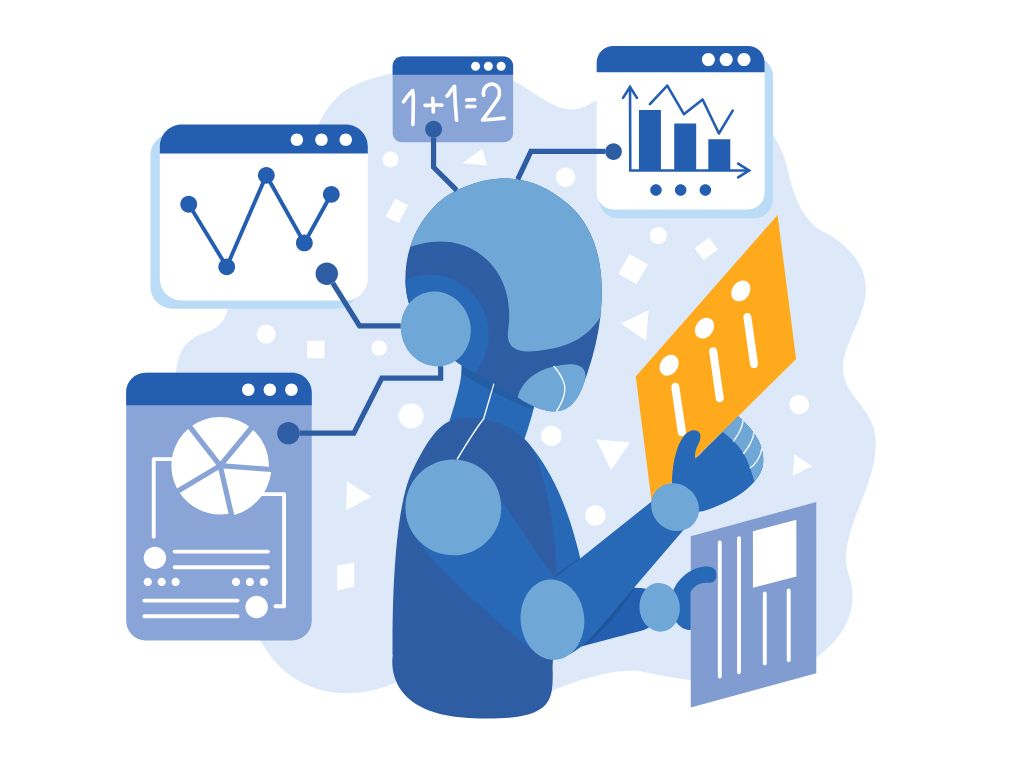
AI Lead Generation: Frequently Asked Questions
What exactly is AI Lead Generation?
At its core, AI lead generation is the strategic application of artificial intelligence technologies – like machine learning, natural language processing, and predictive analytics – to automate, optimize, and fundamentally enhance every stage of the lead generation process. It transforms traditional guesswork into data-backed precision, helping you find, engage, and qualify prospects with unprecedented efficiency and personalization. Think of it as infusing intelligence into what was once a largely manual and intuitive operation.
Will AI replace my sales and marketing team?
Absolutely not. This is one of the biggest misconceptions. AI is designed to augment, not replace, human capabilities. It takes over the tedious, repetitive, and data-intensive tasks (like sifting through vast datasets, automating initial outreach, or scoring leads), freeing your sales and marketing professionals to focus on what they do best: building genuine relationships, understanding complex client needs, strategic thinking, and closing deals. AI empowers your teams to work smarter, making their roles more impactful and fulfilling.
Is AI Lead Generation only for big companies?
While large enterprises might have more complex data infrastructures, AI lead generation is increasingly accessible to businesses of all sizes, including SMBs. Many AI-powered tools and platforms are now designed with user-friendly interfaces and offer scalable solutions. The core benefits – improved efficiency, higher quality leads, and better ROI – are valuable for any business looking to grow, regardless of its size. The key is to start with clear objectives and a phased implementation.
How does AI ensure I get better leads, not just more?
AI ensures lead quality through several mechanisms:
- Intelligent Identification: Machine Learning algorithms analyze vast amounts of data to identify subtle patterns and buying signals that indicate true intent, pinpointing prospects who are not just a demographic fit, but an intent fit.
- Dynamic Lead Scoring: AI continuously scores and prioritizes leads based on their real-time behavior and likelihood to convert, ensuring your sales team focuses their precious time on the hottest opportunities.
- Hyper-Personalization: By tailoring messages and content dynamically to individual prospect needs and pain points, AI ensures that engagement is highly relevant, attracting more genuinely interested parties and reducing unqualified responses.
What kind of data does AI need to work effectively?
AI thrives on data! To deliver its full potential, it needs access to a variety of clean, integrated data sources. This typically includes:
- Your CRM data: Past customer interactions, sales history, lead sources.
- Website analytics: Visitor behavior, pages viewed, time on site, downloads.
- Marketing automation data: Email opens, click-through rates, content engagement.
- Social media activity: Interactions, mentions, sentiment.
- Third-party data: Firmographics (company size, industry), technographics (tech stack used), demographic information.
- Publicly available data: News, financial reports, industry trends.
The more comprehensive and accurate your data foundation, the more intelligent and effective your AI lead generation engine will be.
How do I get started with AI Lead Generation?
Begin with a clear strategy. Start by defining your specific objectives and KPIs. Then, conduct an audit of your existing data and tech stack to understand your foundation. Next, select AI tools that align with your core needs and integrate seamlessly with your current systems. We recommend a phased implementation, starting with a pilot program to test, learn, and iterate. Crucially, train and empower your teams to embrace and leverage AI, fostering a collaborative, data-driven culture. Continuous monitoring and optimization are key to long-term success.
One Response to AI Lead Generation: The Future of Sales & Marketing Growth